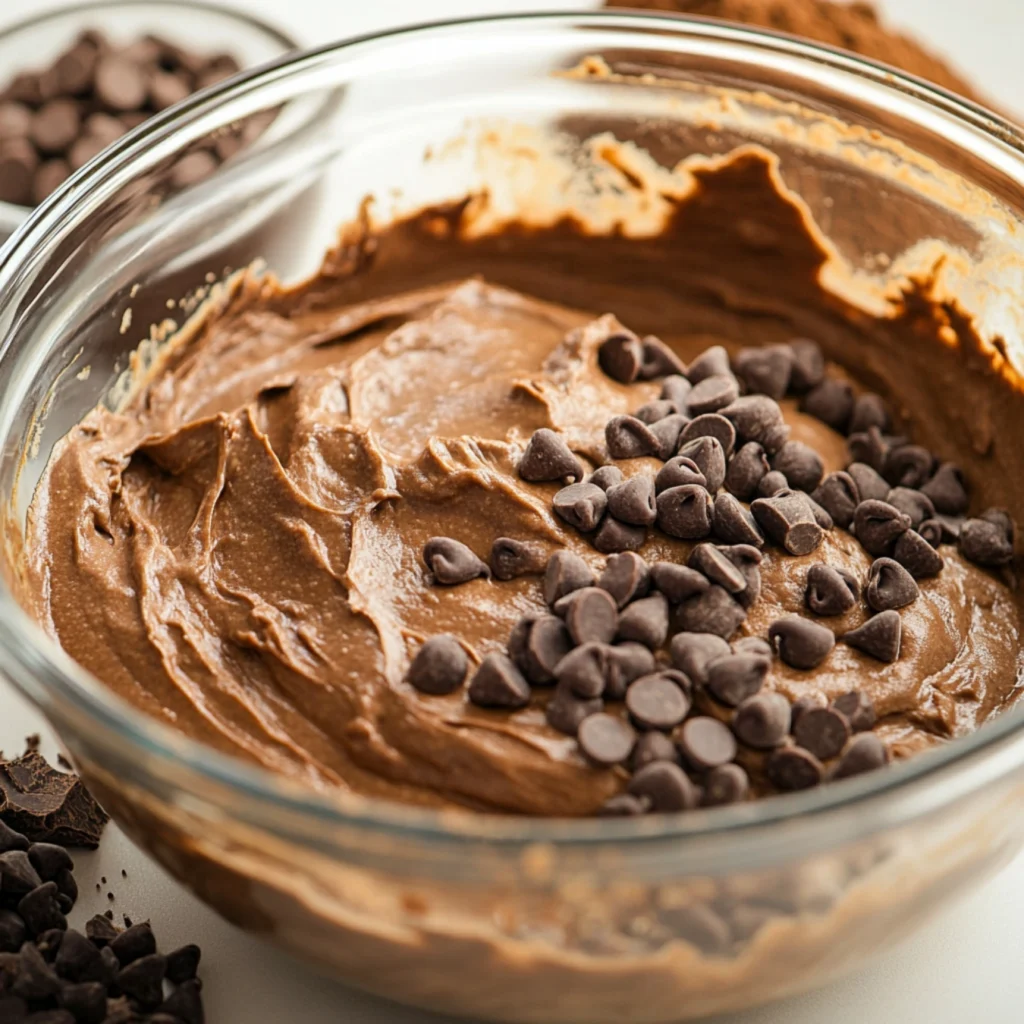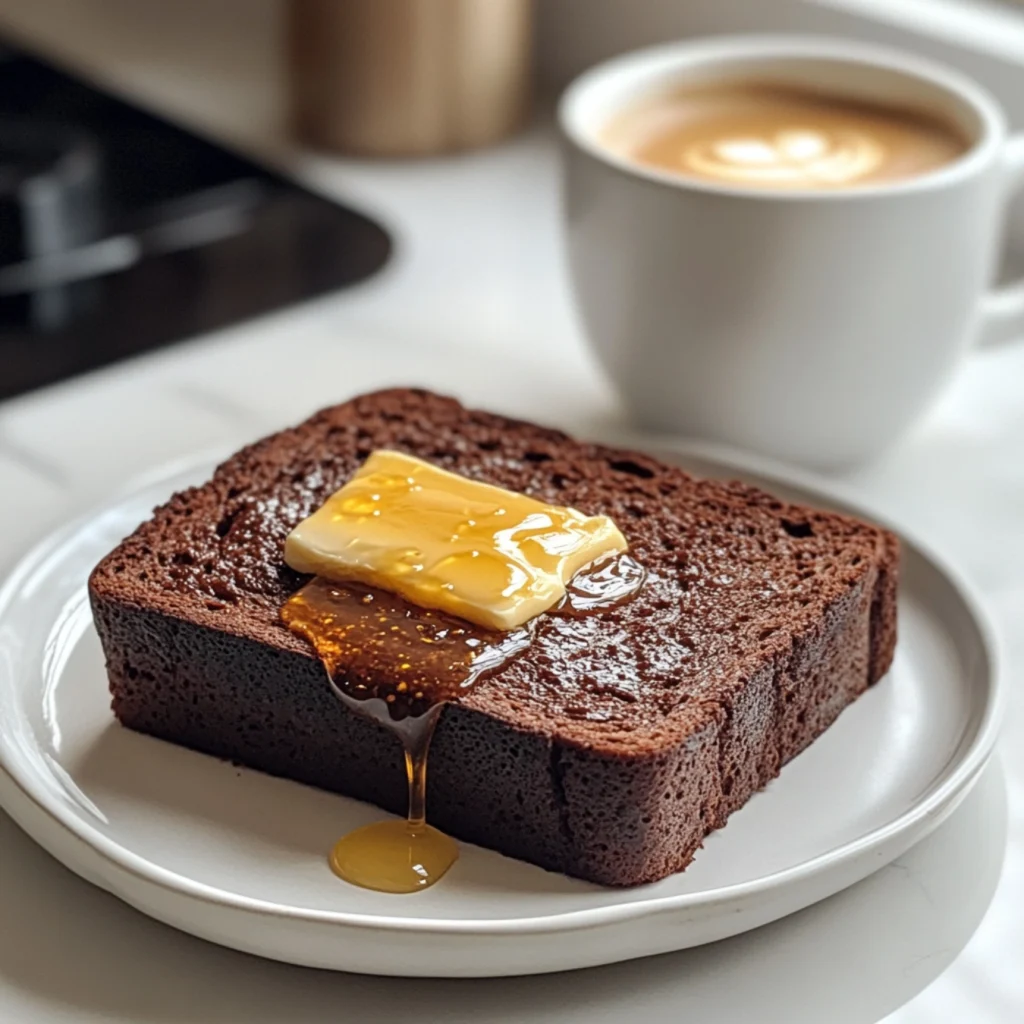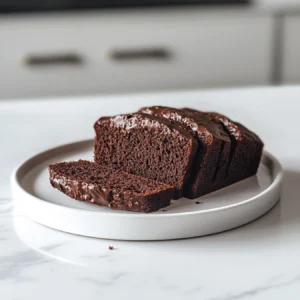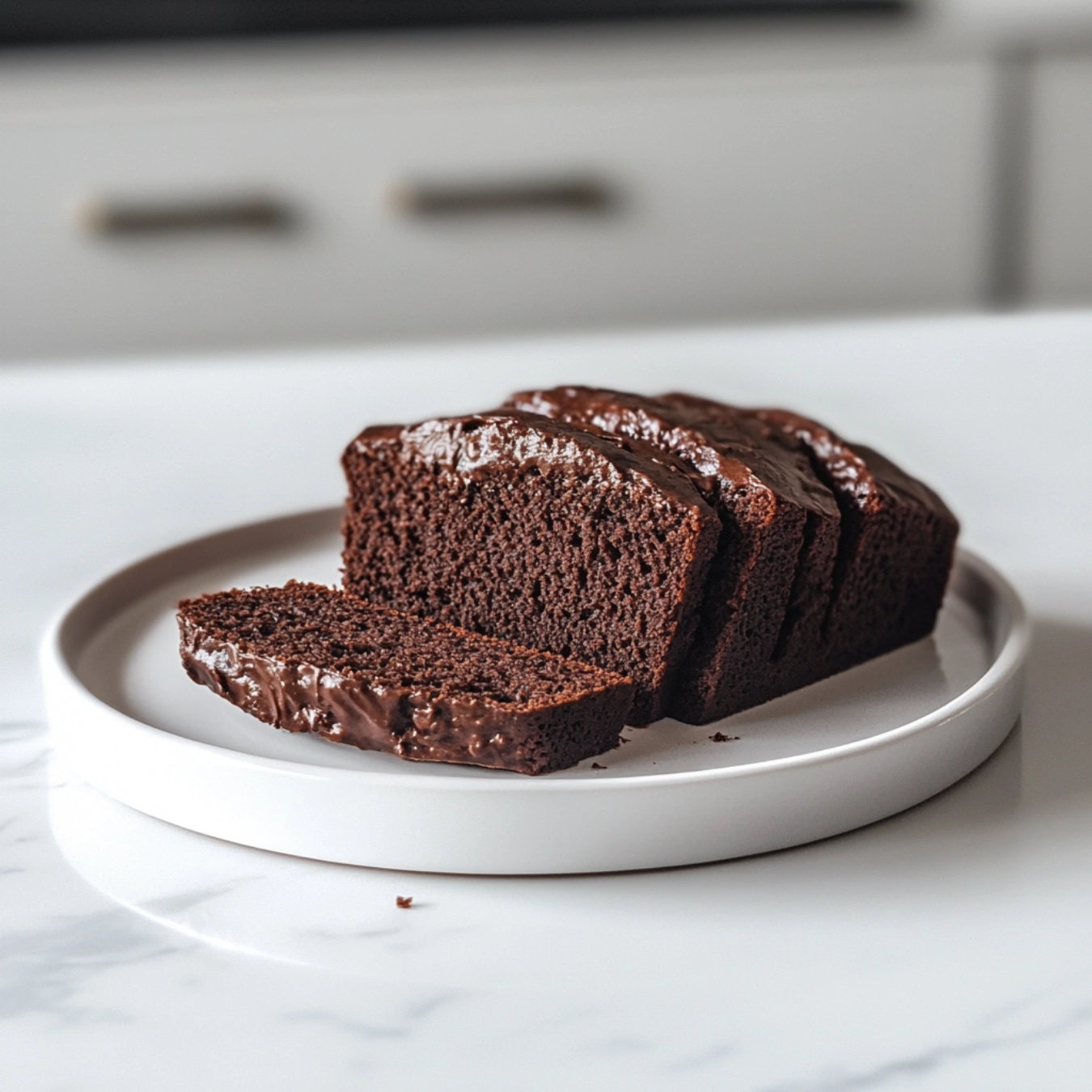If you enjoy chocolate, this thick and delicious Chocolate Bread Recipe is ideal. Breakfast, a snack, or even dessert would benefit from this soft, incredibly chocolatey, slightly fudgy texture. It gets a double dose of chocolate from cocoa powder and optional chocolate chips; buttermilk keeps it ultra moist.
Best of all? Made in just over an hour, it calls for no yeast and is simple.
Table of Contents
Why You Will Love This Recipe
- It has a rich chocolate flavor and is made with cocoa powder and optional chocolate chips.
- Soft and moist texture: buttermilk keeps bread rich and smooth.
- Not necessarily yeast; mix, pour, and bake!
- Perfect Any Time of Day: Savour it warm with butter, as a snack, or even with coffee.
📌 Want a rich chocolate treat? Try this Chocolate Cobbler Recipe for a warm, gooey dessert!
Ingredients
- All-Purpose Flour : Provides bread’s structure from the basis.
- Unsweetened Cocoa Powder : Tastes strongly like chocolate.
- Baking Soda : Makes bread stay fluffy and rise.
- Salt : Accentuates the chocolatey taste.
- Granulated Sugar : Brings exactly the correct level of sweetness.
- Melted Unsalted Butter : Adds richness and maintains bread supple and moist.
- Eggs : Bind the components together.
- Vanilla Extract : Accentuates the chocolate taste.
- Buttermilk : Keeps the bread especially delicate and moist. (Substitute one cup of milk plus one tablespoon of vinegar).
- Chocolate Chips (Optional) : More chocolate is needed in every mouthful.
👉 The complete ingredient list with measurements is in the recipe card below!
📌 Looking for another chocolate loaf recipe? Check out this Chocolate Pound Cake Recipe for a dense and buttery option!
Recipe for Chocolate Bread
Step 1: Set the Oven’s Temperature
Set your oven to 350°F (175°C). Line a 9×5-inch loaf pan with parchment paper after greasing it.
Step 2: Mix the Dry Ingredients
Whisk thoroughly in a big mixing bowl:
- All-purpose flour
- Cocoa powder
- Baking soda
- Salt
- Granulated sugar
Step 3: Combine the Wet Ingredients
Whisk together in another bowl:
- Melted butter
- Eggs
- Vanilla essence
- Buttermilk
Whisk until very well blended and smooth.
Step 4: Combine the Batter
- Add the wet mixture incrementally to the dry ingredients, stirring until just blended.
- Folding in chocolate chips for extra richness is optional.
Step 5: Bake the Bread
- Level the batter evenly into the prepared loaf pan.
- Bake for 50 to 55 minutes, until a toothpick inserted into the middle comes out clean.
Step 6: Cool and Serve
- After ten minutes of cooling in the pan, transfer to a wire rack to cool completely.
- Slice and enjoy warm with butter, peanut butter, or a drizzle of chocolate sauce!

📌 Want a unique chocolate experience? Try this Dubai Chocolate Bar Recipe for something exotic!
Good Advice for the Perfect Chocolate Bread
- Don’t Overmix the Batter : Stirring until just combined will keep the bread soft and delicate.
- Use Premium Cocoa Powder : The taste of the chocolate will be much enhanced.
- Check for Doneness : Insert a toothpick in the center; if it comes out clean, the bread is ready.
- Want Extra Moist Bread? Add two tablespoons of sour cream or Greek yogurt for extra richness.
- For a Crackly Top : Lightly sprinkle sugar on top before baking.
How to Serve
Though this chocolate bread is fantastic on its own, you can also:
- Top with butter : Simple and quite tasty!
- Drizzle with Nutella or Peanut Butter : For extra decadence.
- Serve alongside ice cream : A sumptuous dessert idea!
- Pair with coffee or hot chocolate : For a warm and soothing combination.
Make Ahead and Storage
Preserving Leftovers
- Store the bread in an airtight container at room temperature for up to three days.
- Refrigerate for up to one week.
Freezing
- Wrap the entire loaf in plastic wrap or freeze individual slices.
- Store for up to three months. Thaw at room temperature before serving.
Reheating
- Microwave : Heat for 10 to 15 seconds for a warm, fresh-from-the-oven taste.
- Oven : Warm at 300°F (150°C) for five to ten minutes.

FAQs
Can I turn this into muffins?
Yes! Spoon batter into a muffin tray and bake for 18 to 20 minutes at 350°F (175°C).
Can I substitute Dutch-process cocoa powder?
Definitely! However, add ½ teaspoon baking powder to help the bread rise correctly, as Dutch-process cocoa is more alkaline.
Can I make this gluten-free?
Yes! Swap the all-purpose flour for a 1:1 gluten-free baking flour.
How can I make it extra chocolatey?
Toss dark chocolate chips with a tablespoon of espresso powder to deepen the chocolate flavor!
Conclusion
Chocolate aficionados will find this rich and delicious chocolate bread an ideal delight. It will satisfy your chocolate cravings whether enjoyed warm, cold, or with your favorite spread. 😋🍫

Rich and Moist Chocolate Bread with a Deep Cocoa Flavor
Equipment
- Mixing Bowl
- Whisk
- Loaf Pan (9×5-inch)
- Parchment Paper
- Wire rack
Ingredients
Dry Ingredients
- 1 3/4 cups all-purpose flour
- 1/2 cup unsweetened cocoa powder
- 1 tsp baking soda
- 1/2 tsp salt
- 1 cup granulated sugar
Wet Ingredients
- 1/2 cup unsalted butter melted
- 2 large eggs
- 1 tsp vanilla extract
- 1 cup buttermilk or 1 cup milk + 1 tbsp vinegar
Optional Add-ins
- 1/2 cup chocolate chips for extra richness
Instructions
- Preheat oven to 350°F (175°C). Grease a 9×5-inch loaf pan and line with parchment paper.
- In a large bowl, whisk together flour, cocoa powder, baking soda, salt, and sugar.
- In another bowl, whisk melted butter, eggs, vanilla extract, and buttermilk until smooth.
- Gradually add the wet mixture into the dry ingredients, stirring until just combined. Fold in chocolate chips if using.
- Pour the batter into the loaf pan and spread evenly.
- Bake for 50-55 minutes or until a toothpick inserted into the center comes out clean.
- Let cool in the pan for 10 minutes, then transfer to a wire rack. Slice and enjoy!

